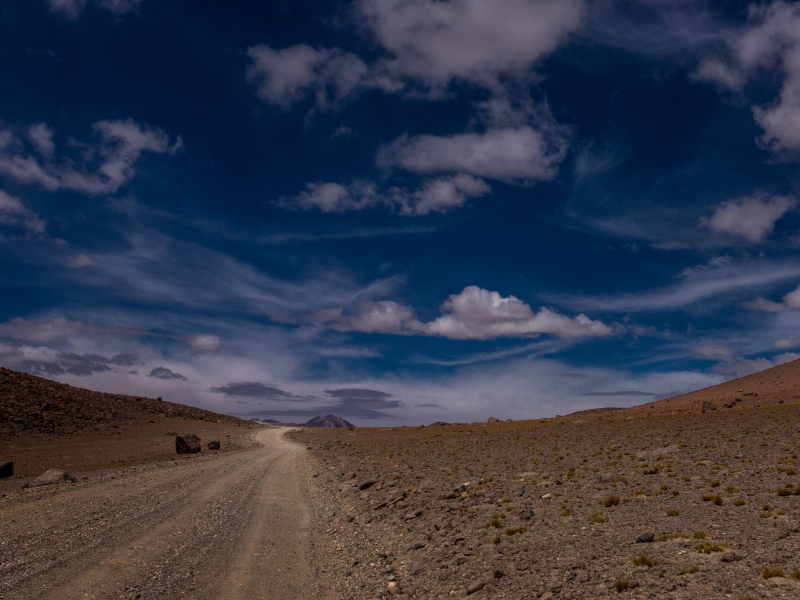
Chile. Been here now for a few weeks, and it’s been a bit of an adjustment. To being in a wealthy country, around people and family like me. There’s this idea of beauty being found in extremes, from scorching deserts to freezing arctic tundra, and in that, Bolivia does not disappoint.
Press on further and further into the desert. Vegetation disappears entirely in places, llamas and their companions roam in larger and larger circles looking for food. When the winds come, they kick up mini-sandstorms. Duck behind the mini-dunes to hide, pull up the hood of your raincoat. Wait it out. Empty your pockets later and you’ll find you’ve since been carting around a few extra grams of dirt.
Cyclists pass GPS coordinates of water around as sources become farther and farther apart. This area of the desert is home to many small lakes, but people repeatedly give warnings against drinking lake water, citing it to be salty and mineral-rich. Borax is mined here. Some of it may even be used in your detergent at home.
In a country like this, standard operating procedure says to gather information about a planned route, prepare as best you can, and hope nothing goes wrong. Sometimes something does. Sometimes the only water source in 60km has a dead rat floating in it. And you’ve spent the last few hours day trying to reach that well, over a pass, in the end fighting against the wind and through deep washboard sand. But wait. You do that last part every day. We all do. So set up the tent, start boiling lake water while you watch the sun set over the salt and the mountains. Sleep semi-comfortably knowing that even if you do get sick from the water, by that time you’ll be in Chile, and healthcare exists there.
The border crossing between the two countries is so much in the middle of nowhere that not even a single money-changer lurks there. Chile doesn’t bother to keep an immigration office at the border. They know by the time you reach the Bolivian exit, you’ll have no food and will have to continue down to the nearest town, and they might just as well keep the customs station there.
The socio-economic difference between the two countries is evident immediately. It’s one more extreme. It’s not one that I would call beautiful.













 Thanks to the Pikes for the route notes.
Thanks to the Pikes for the route notes.





How do you take pictures of you on bike? Timer? Another biker?
Thanks for sharing your awesome journey with me. I would have never ever seen these beautiful breathtaking sights on my own. I retired from Amtrak effective Jan1 and planning to return to Scandinavia this year.
Thanks for following along. I’ve been riding solo through Bolivia, so the self shots were with a tripod/timer. Better to be with a partner though. Would love to see photos of Scandinavia- probably some great places to bike there too! If I don’t catch you in person before you go back, enjoy your free time!
Wow Sam, crazy bolivia! I remember…. Relax a while in San Pedro! And then paso sico?? You should!
Bolivia was great, wasn’t expecting such a drastic change from Peru. Too far south now for Sico! For next time- mine shaft camping sounds pretty nice!